Studio Visit: Sticky Glass
Behind the scenes with the playful glassware brand exploring how the material is inherently queer

The Sticky Glass world, brimming with bulbous and colorful glassware, is funky and fun. Helmed by Grace Whiteside, the trans- and queer-led design company applies fascinating shapes and contrasting hues to drinkware, pipes and bongs, decor, flytraps and, soon, a lighting collection that’s debuting in April. But there’s more than whimsy behind these jolly forms; there’s multi-functionality, emotion, acceptance, identity and thoughtfulness. At the heart of this small-scale, Brooklyn-based brand is a keen understanding of the material and a vision to realize its full potential.
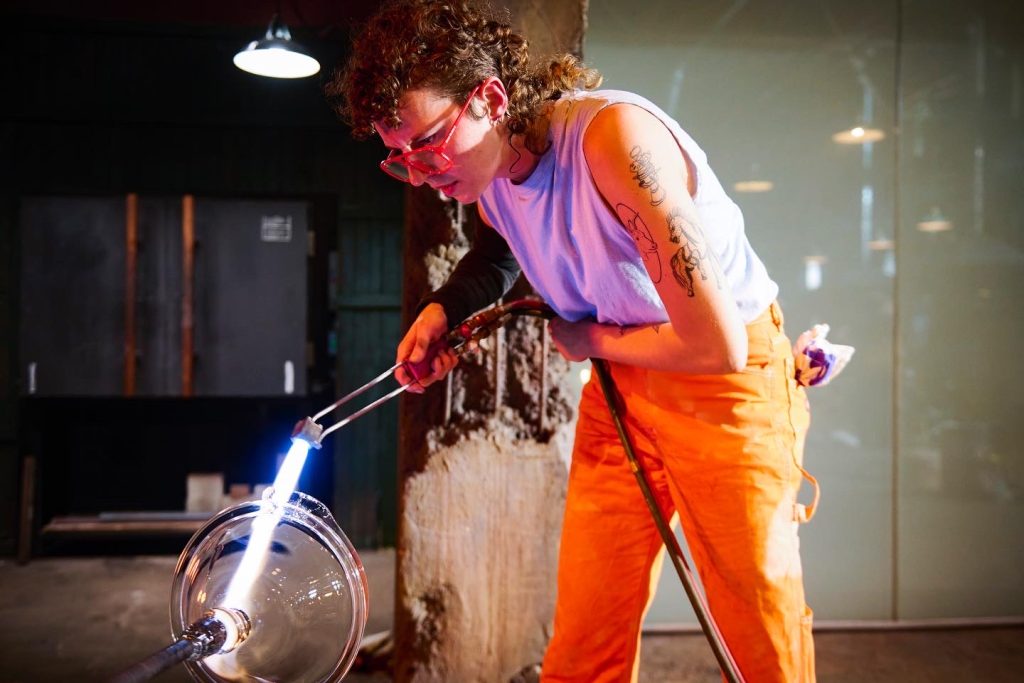
The name of the brand best sums up their dialogue between form and function. Whiteside tells us, “I was thinking of the consistency of molten glass which is sort of the consistency of honey. Glass really loves to stick to itself which is how we build forms. A lot of my forms that have these little handle details or these feet or any of these fun details that I have on the glassware come from the glass acting as glue to itself. So it was sort of like a double meaning of the word.”
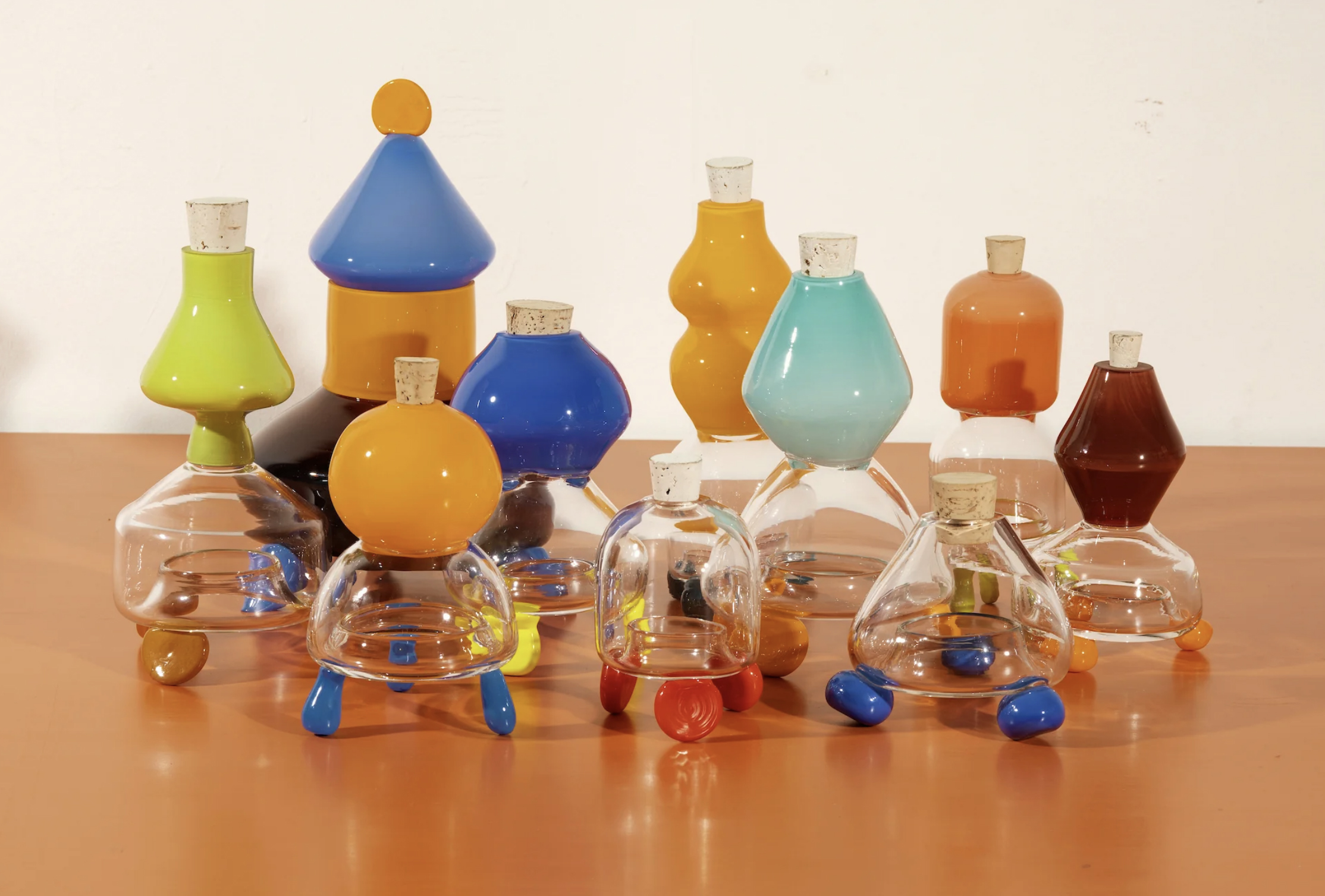
This amorphous quality was particularly resonant for the founder, who often pursues life by sticking it to binary structures. They continue, “I find glass as a material very gay, very queer in the way that it moves; it’s neither a solid nor a liquid. It fluctuates between states, so it’s just like a non-binary material sticking to itself. That’s pretty gay in my opinion.” It also brings the business full-circle, as they donate to trans, LGBTQ+ and BIPOC organizations whenever possible.
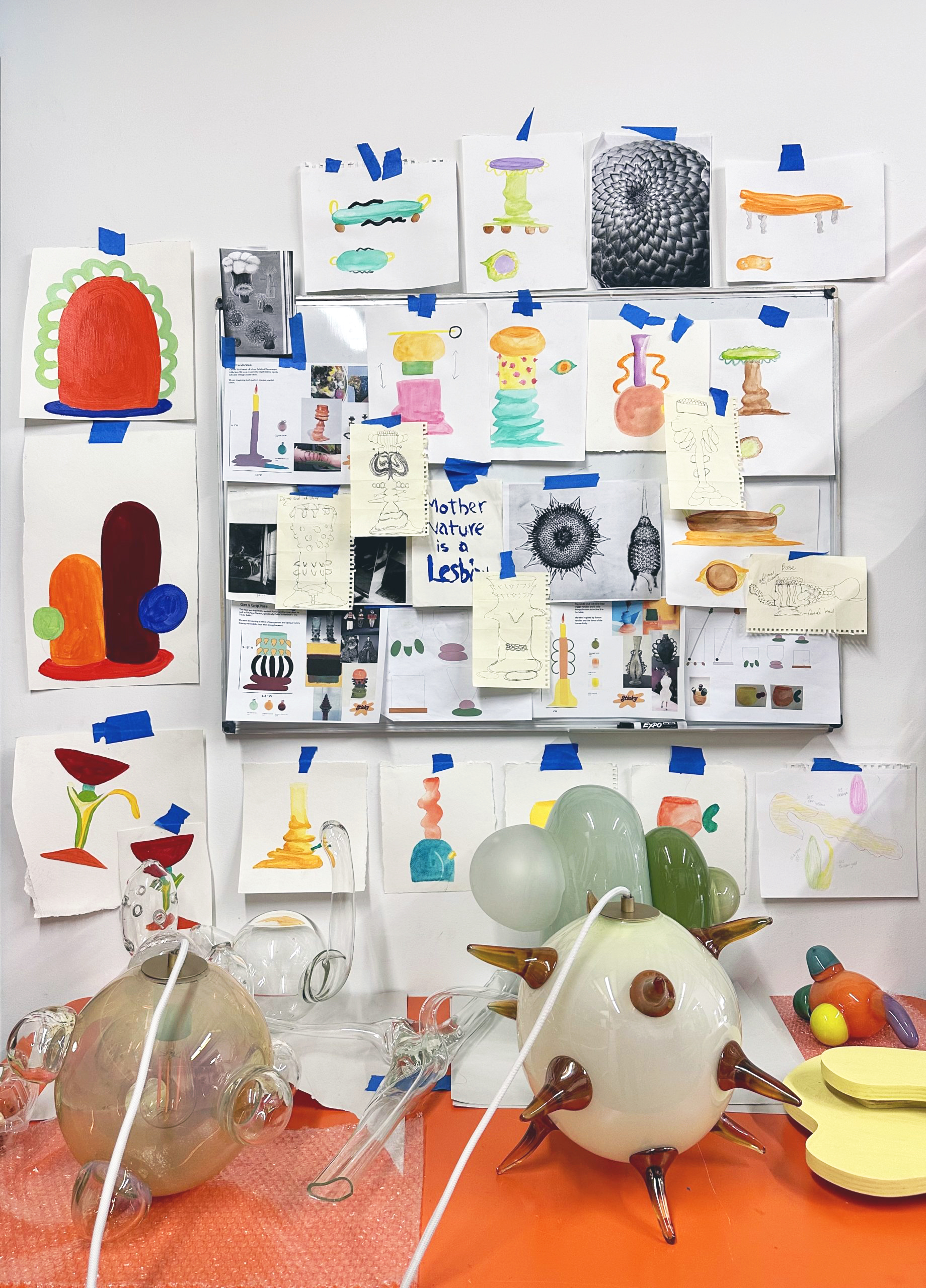
Whiteside leans into the material’s fluidity while blowing glass, which they do primarily at UrbanGlass, a non-profit hub that explores the medium in Fort Greene. While they locate inspiration for their playful designs (which they visualize and sketch at their Red Hook studio) in fashion, nature and friends, it is during the process itself that Whiteside really finds a muse. “I feel like a lot more inspiration comes from working with the material and seeing how it moves and being excited by that in relation to my body. It’s like this is my first love, my primary partner,” they explain. “A lot of my forms are really bodily, sort of expressing the intimacies within my own body or friends’ bodies.”
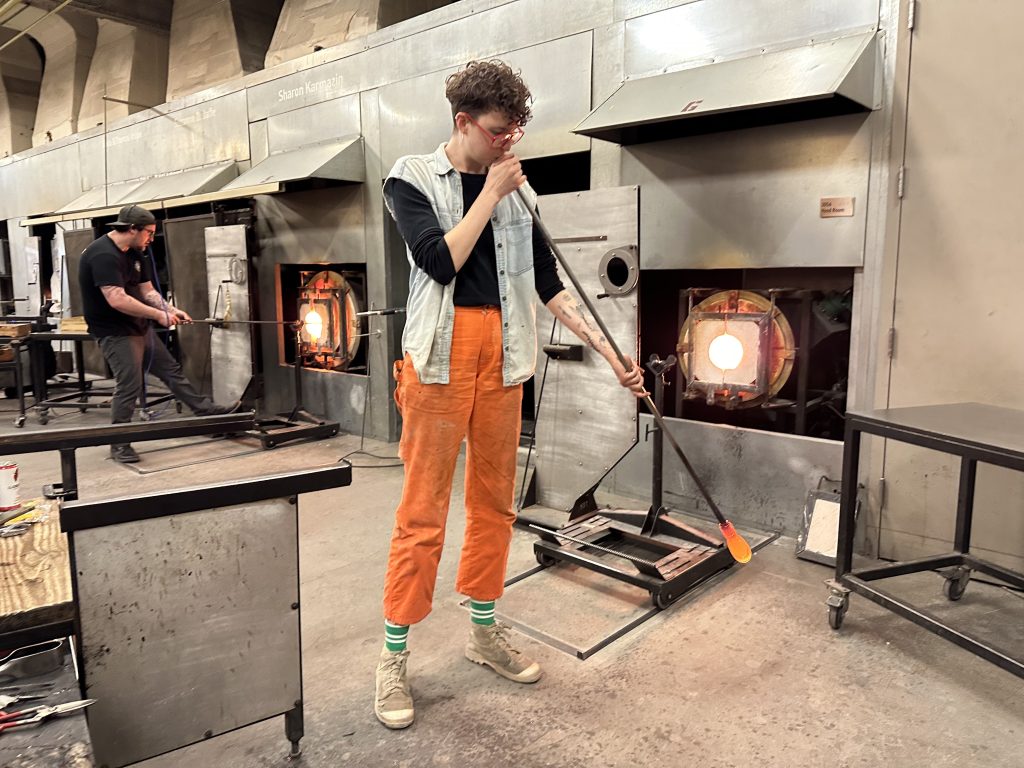
Whiteside first gravitated toward glass in order to create pieces to complement their performance work, so it makes sense that the body is such an integral aspect of their multi-disciplinary practice. When watching Sticky Glass in action (which typically has two to four blowers in the space, including the founder and their assistant Aex Demmerle), this is even more apparent.
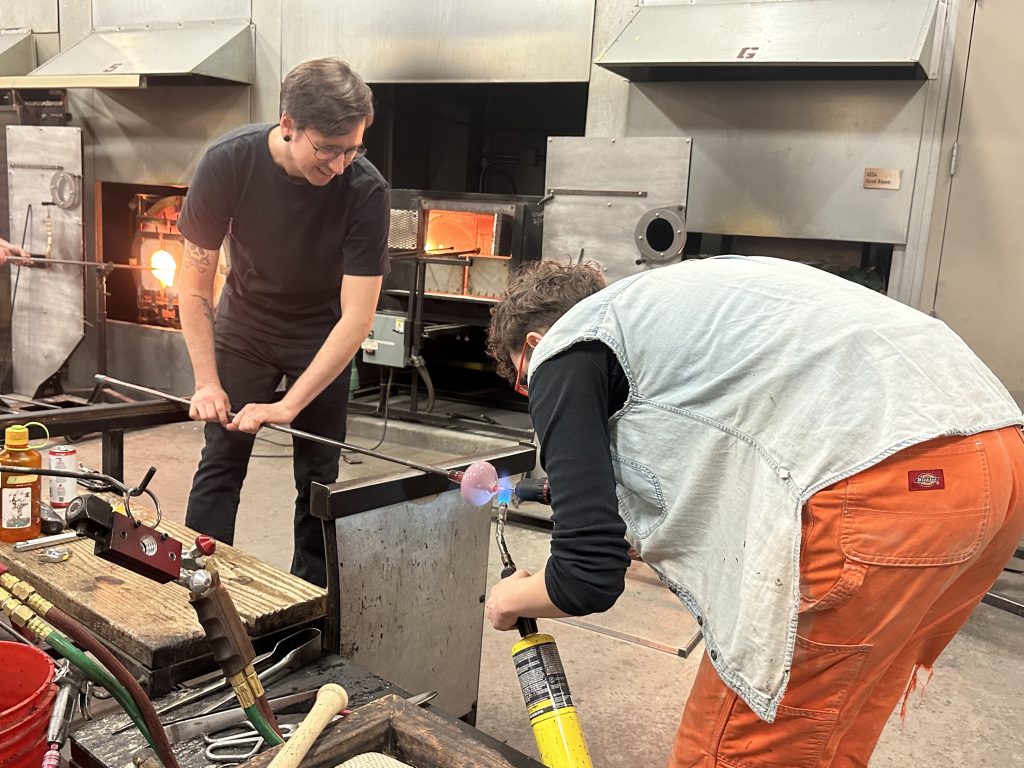
The team works in groups of two, constantly shifting glass into and out of the reheating chamber (also known as the glory hole), heating, cooling and molding it. While one heats a decorative piece to become a bubble or spike, the other is gracefully rolling out the glass, taking turns switching pieces into the oven. Watching them feels almost like a performance in itself, as the pairs carefully wield their smoldering glass around one another with grace, anticipating each other’s movements like choreography. Whiteside likens this to an experimental dance, and considering the very hands-on process, one can see how much the body physically plays a role in shaping the pieces.

Sticky Glass works with soft glass, a higher expansion material comprised of sodium oxide, silicon dioxide and calcium dioxide. For their swathes of color, Whiteside relies on color bars (cylindrical sticks of colored glass) that they often sandwich between clear layers for a deeper visual effect.
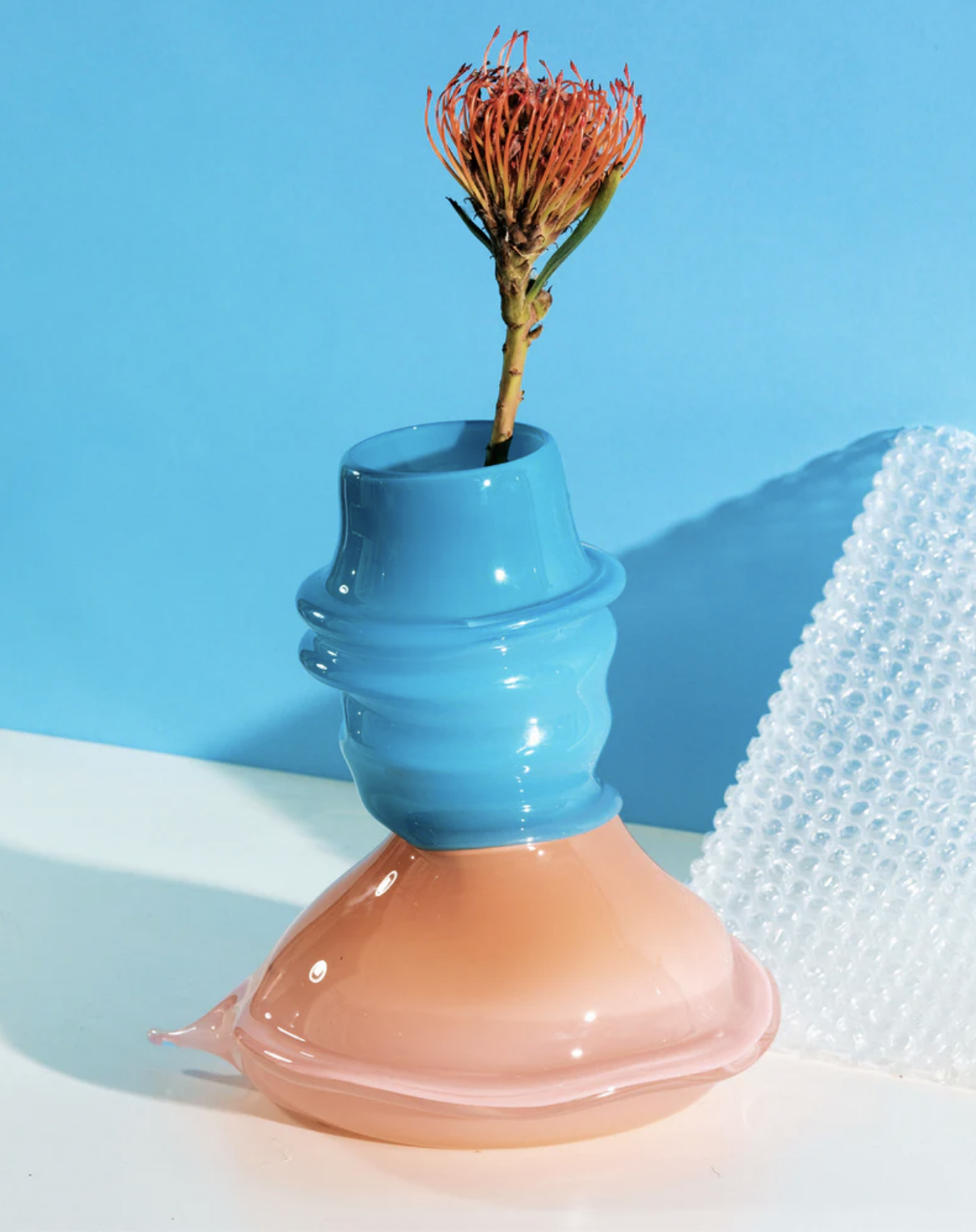
“Oftentimes you’ll buy a color and when you blow it up, it changes. There are colors that are called striking colors, where the metal oxidizes inside the colors and strike at different heat and create an ombre effect naturally, which I really enjoy. I’m always interested in colors that have this ambiguity of their own. To me, it’s sort of this queer way of becoming… as a color. It goes along with the material really well and adds to the properties of the work,” they explain.

Once molded, the products are rested at 900 degrees Fahrenheit in a hot annealing oven where they are brought down to room temperature over the course of nine to 12 hours. When done, they are moved to the Red Hook studio, which currently also houses early samples of the brand’s first foray into lighting. “We’ll be launching first week of April ideally,” says Whiteside. “It’s three styles: the Pokey Pendant, Bubble pendant and these table lamps which are also interchangeably floor lamps due to the scale. We’re launching with certain colorways, but it will all be customizable.”
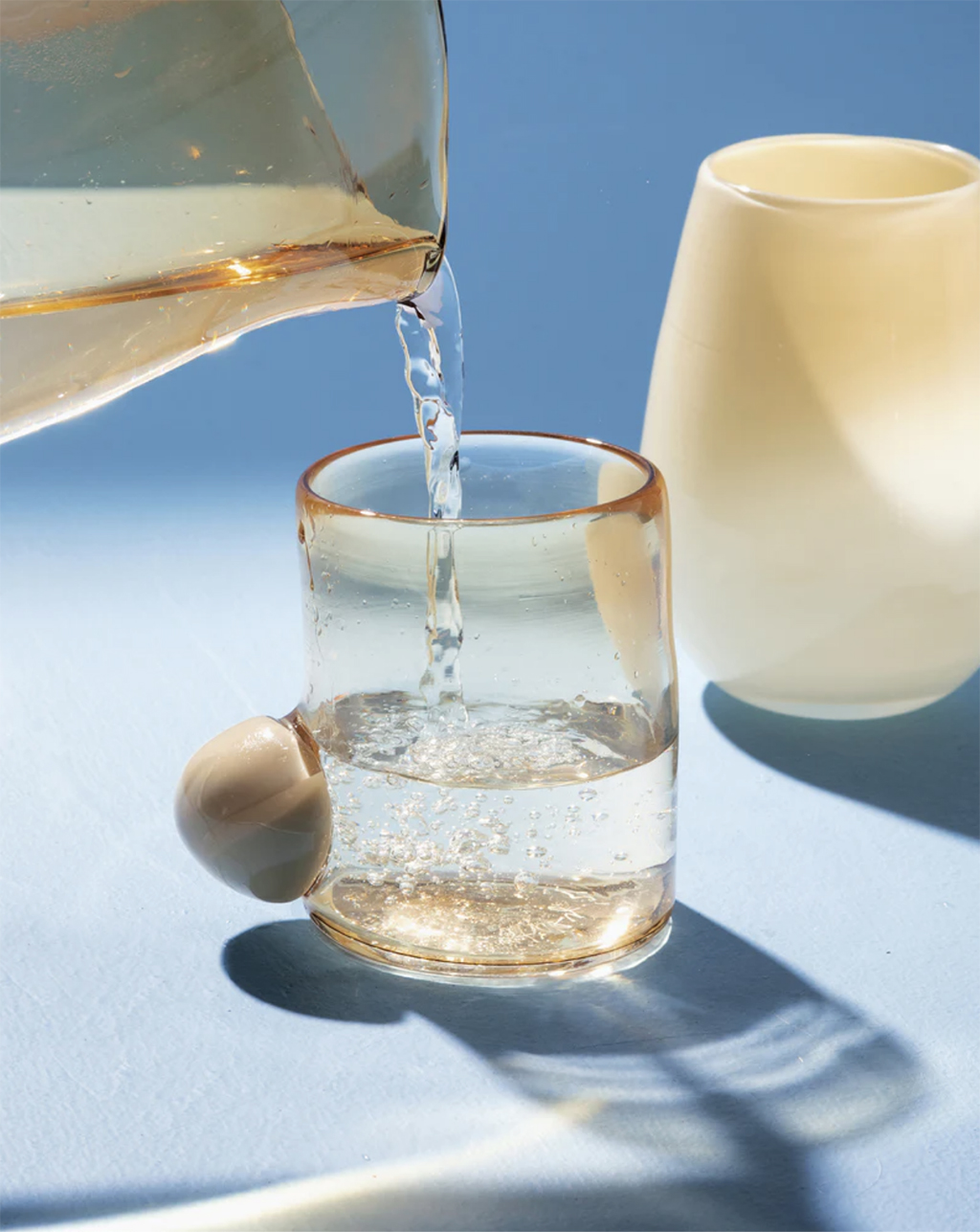
In design as well as practice, Sticky Glass playfully explores the nebulous parts of life. It’s a style indicative of how Whiteside approaches and shapes the world: rejecting the norm and embracing all things playful, offbeat and distinctive.
Hero image courtesy of Sticky Glass












